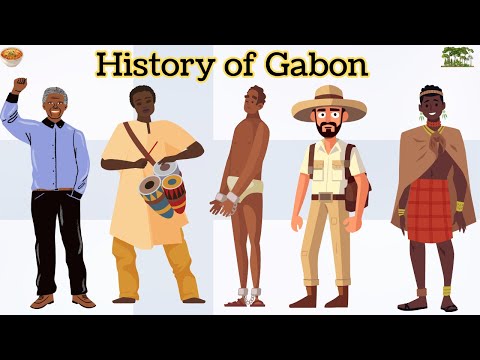
Nestled along the Atlantic coast of Central Africa, Gabon is a country teeming with vast natural resources and a cultural tapestry that dates back thousands of years. Despite its small population and low international profile, Gabon boasts a rich history that stretches from ancient indigenous societies through complex colonial encounters to its current status as a significant player in sub-Saharan politics and economics. This article aims to unfold the layers of Gabon’s history, providing insights into the events and forces that have shaped this intriguing nation.
### Ancient Roots and Tribal Traditions
Gabon’s story begins with its earliest inhabitants, believed to have settled there around 12,000 BCE. Archaeological excavations have unearthed tools and artifacts that suggest a long history of human occupation well before modern borders were drawn. The Bantu migrations, which started around 1000 BCE and lasted until about 500 CE, brought new waves of people into the region. These groups brought with them advanced ironworking skills, agriculture practices, and social-political structures which would lay the foundational elements of Gabon’s early societal organization.
The country is home to over forty ethnic groups today, with the Fang being the most populous. Each group has contributed unique elements to Gabonese culture from language and art to music and religious beliefs. The traditional belief systems in Gabon involved animism, ancestor worship, and spiritual rituals that are still practiced by some communities today.
### European Contact: Trade and Colonization
European contact began in the 15th century when Portuguese explorers first reached Gabon’s coast. Subsequent centuries saw French, Dutch, Spanish, and British traders engaging with local communities primarily for slaves during the transatlatic slave trade era. It wasn’t until 1839 when French explorers officially established presence leading to a full-scale colonization after declaring it a French protectorate in 1885 at the Berlin Conference.
Under French rule, Gabon became part of French Equatorial Africa (AEF) in 1910. This period was marked by significant infrastructure development albeit at high costs to local populations including forced labor practices till after World War II where reforms began taking place gradually leading towards independence.
### Pathways to Independence
Post-World War II saw an increase in nationalist sentiments across Africa including Gabon. Léon M’ba emerged as a key figure advocating for independence negotiating terms directly with Charles de Gaulle’s French government leading up to August 17th 1960 when Gabon officially gained independence appointing M’ba as its first President.
### Post-Colonial Challenges & Progress
Post-independence years in many African countries are often tumultuous due to political instability; however; despite some early struggles including coups d’état; since Ali Bongo Ondimba took office following his father Omar Bongo who had ruled for over four decades; efforts have been made towards political stability economic diversification beyond oil (which accounts for majority of GDP) such as investment into tourism leveraging on it’s lush forest cover home to wildlife like gorillas elephants etc..
### Conclusion: The Unfolding Story
The real story behind Gabon encompasses resilient societies shaped by indigenous knowledge surviving external pressures adapting through each phase whether be it pre-colony colony or post-independence stages ultimately showcasing unique blend cultural heritage alongside natural beauty making it one central Africa’s fascinating countries explore understand appreciate more deeply beyond headlines often seen global stage today!
